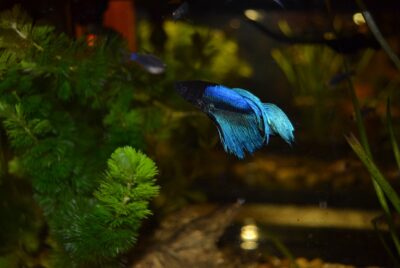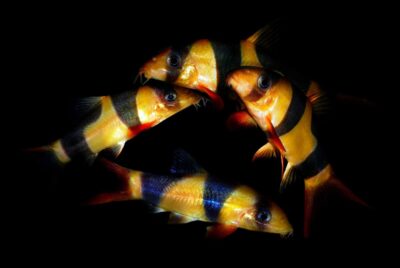How Long Does an Aquascape Last?
Aquascaping, the art of creating stunning underwater landscapes, has gained immense popularity among fishkeeping enthusiasts. As an avid enthusiast and advisor in the realm of aquascapes, I often encounter questions regarding the lifespan of these captivating aquatic creations. In this article, I will delve into the factors influencing the longevity of an aquascape and provide helpful suggestions to ensure their lasting beauty and vibrancy.
The Beauty of Aquascapes and Their Lifespan
Aquascapes, with their intricate designs and harmonious combination of aquatic plants, hardscape elements, and living organisms, bring a touch of natural splendor to any living space. They not only serve as breathtaking focal points but also provide a tranquil and captivating environment for aquatic life.
Understanding the Factors Influencing the Lifespan of an Aquascape
To comprehend how long an it can last, it’s crucial to consider several influential factors. These factors directly impact the stability, health, and their aesthetics.
Quality of Materials Used – ( (How Long Does an Aquascape Last))
The longevity of them heavily depends on the quality of materials employed during its creation. Investing in high-grade hardscape materials, such as rocks and driftwood, ensures their durability and resistance to deterioration over time. Additionally, choosing a suitable and nutrient-rich substrate is vital for the overall health of the plants.
Maintenance and Care Routine – ( (How Long Does an Aquascape Last))
Regular and proper maintenance is essential for preserving the beauty and lifespan of an aquascape. Establishing a consistent care routine, including tasks like water changes, plant trimming, and equipment cleaning, ensures a healthy and balanced environment for the aquatic ecosystem to thrive.
Water Parameters and Stability – ( (How Long Does an Aquascape Last))
Maintaining optimal water parameters, such as temperature, pH, and nutrient levels, significantly contributes to the longevity of an aquascape. Sudden fluctuations or imbalances can cause stress to the plants and inhabitants, leading to their deterioration and ultimately affecting the overall lifespan of the aquascape.
Plant and Livestock Selection – ( (How Long Does an Aquascape Last))
Careful consideration should be given to the selection of plants and livestock for an aquascape. Choosing low-maintenance plant species that are suitable for your skill level and compatible with the selected fish and invertebrates is crucial for a long-lasting and flourishing aquascape.
Materials and Equipment for Long-Lasting Aquascapes
To create an aquascape with an extended lifespan, it’s important to focus on using appropriate materials and equipment.
Choosing High-Quality Hardscape Materials
Opt for well-cured rocks and driftwood that are safe for aquatic use. High-quality hardscape materials not only enhance the visual appeal of the aquascape but also ensure their longevity and resistance to degradation.
The Importance of Proper Substrate
Selecting a nutrient-rich substrate that suits the specific needs of the plant species is vital. A well-chosen substrate provides essential nutrients for plant growth, promotes root development, and helps maintain water chemistry stability.
Essential Equipment for Stability and Longevity
Investing in essential equipment, such as a reliable filtration system, a heater, and adequate lighting, plays a crucial role in maintaining stability within the aquascape. These components contribute to a healthy aquatic environment, aiding in the longevity of the aquascape.
Establishing a Maintenance Routine for Your Aquascape
To ensure the long-lasting beauty of your aquascape, it’s important to establish and follow a regular maintenance routine.
Regular Water Changes and Testing
Performing regular water changes helps maintain optimal water parameters and reduces the buildup of harmful substances. Testing water parameters periodically ensures that they remain within the acceptable range, preventing any potential harm to the aquatic inhabitants.
Pruning and Trimming Plants
Proper pruning and trimming of aquatic plants prevent overgrowth, maintain aesthetic appeal, and promote healthy growth patterns. Regularly removing dead leaves and excessive plant material helps maintain water clarity and reduces the risk of nutrient imbalances.
Cleaning the Aquarium and Equipment
Routine cleaning of the aquarium and equipment is essential to prevent the accumulation of debris and algae. Regularly cleaning the glass, filter media, and other equipment not only keeps the aquascape visually appealing but also improves the overall health of the aquatic ecosystem.
Creating a Balanced Aquatic Environment
Maintaining a balanced aquatic environment is crucial for the longevity of an aquascape.
Monitoring Water Parameters
Regular monitoring of water parameters, such as temperature, pH, ammonia, and nitrate levels, allows for timely adjustments and prevents any unfavorable conditions that may negatively impact the aquascape. Stability in water parameters promotes the well-being of the plants and livestock.
Maintaining Stable Temperature and Lighting
Consistency in temperature and appropriate lighting conditions are vital for the health of the aquascape. Fluctuations in temperature and inadequate lighting can lead to stress and poor growth, ultimately shortening the lifespan of the aquascape.
Ensuring Proper Filtration and Circulation
Efficient filtration and adequate water circulation help maintain water clarity, eliminate toxins, and distribute nutrients throughout the aquascape. A well-functioning filtration system and strategically placed water circulation devices contribute to the longevity and health of the aquatic environment.
Selecting Suitable Plant Species and Livestock
Choosing the right plant species and livestock is crucial for the long-term success of an aquascape.
Low-Maintenance Plants for Beginners
For beginners or those seeking low-maintenance aquascapes, selecting hardy and undemanding plant species is recommended. Plants such as Java Fern, Anubias, and Java Moss are known for their resilience and ability to thrive in a variety of conditions.
Compatible Fish and Invertebrates
Careful consideration should be given to the selection of fish and invertebrates to ensure compatibility with the chosen plants and the overall stability of the aquascape. Fish that are known to be plant-friendly and have a peaceful temperament are generally preferred to avoid any damage to the aquatic vegetation.
Factors That Can Shorten their Lifespan
Certain factors can significantly reduce their lifespan if neglected or not properly addressed.
Neglecting Regular Maintenance
Failure to perform routine maintenance tasks, such as water changes, plant trimming, and equipment cleaning, can lead to a decline in water quality, hinder plant growth, and compromise ecosystem health. Neglecting these essential tasks increases the risk of problems arising within the aquascape.
Inadequate Water Quality Control – ( (How Long Does an Aquascape Last))
Poor water quality management, including neglecting water parameter testing, can result in imbalances, accumulation of harmful substances, and deteriorating health of the aquascape’s inhabitants. Inadequate water quality control negatively impacts the longevity and vibrancy of the aquascape.
Poor Plant and Livestock Choices – (How Long Does an Aquascape Last)
Selecting incompatible or high-maintenance plant species and livestock can lead to various challenges within the aquascape. Plants that require specific conditions or species that may disturb the aquascape’s layout can affect the overall aesthetics and their lifespan.
Extending the Lifespan of Your Aquascape
To extend the lifespan of your aquascape and maintain its visual appeal, it’s important to follow a few key practices.
Performing Timely Maintenance Tasks
Consistently performing maintenance tasks, including regular water changes, pruning, and equipment cleaning, helps prevent the accumulation of debris, maintains optimal water parameters, and promotes their overall health.
Addressing Any Issues Promptly
If any issues arise within the aquascape, such as algae growth, fish illness, or plant nutrient deficiencies, it’s important to address them promptly. Identifying and rectifying problems in a timely manner can prevent further damage and help restore the longevity of the aquascape.
Adjusting Water Parameters as Needed
Monitoring water parameters and making necessary adjustments, such as temperature, pH, and nutrient levels, ensures that the aquascape remains in an optimal and stable environment. This attention to detail aids in extending their lifespan and promoting healthy growth.
Conclusion – (How Long Does an Aquascape Last)
Their lifespan is influenced by various factors, including the quality of materials used, maintenance routine, water parameters, and the selection of plants and livestock. By utilizing high-quality materials, establishing a consistent maintenance routine, creating a balanced aquatic environment, and selecting suitable flora and fauna, you can extend the lifespan of your aquascape and enjoy its captivating beauty for years to come.
Frequently Asked Questions – (How Long Does an Aquascape Last)
Q: Can I use any type of rocks and driftwood for my aquascape?
A: It’s recommended to use well-cured rocks and driftwood that are safe for aquatic use to ensure their durability and longevity.
Q: How often should I perform water changes in my aquascape?
A: Regular water changes should be conducted, typically once a week or as needed, to maintain optimal water quality and prevent the buildup of harmful substances.
Q: What are some low-maintenance plant species suitable for beginners?
A: Java Fern, Anubias, and Java Moss are popular low-maintenance plant species that are suitable for beginners due to their resilience and adaptability.
Q: What should I do if I notice algae growth in my aquascape?
A: Algae growth can be managed by adjusting lighting duration, reducing nutrient levels, and ensuring proper water circulation. Regular cleaning and maintenance tasks also help prevent excessive algae growth.
Q: Can I keep any type of fish or invertebrates in my aquascape?
A: Careful consideration should be given to the compatibility of fish and invertebrates with the plants and overall ecosystem. Choosing plant-friendly and peaceful species is recommended to maintain the longevity and harmony of the aquascape.




